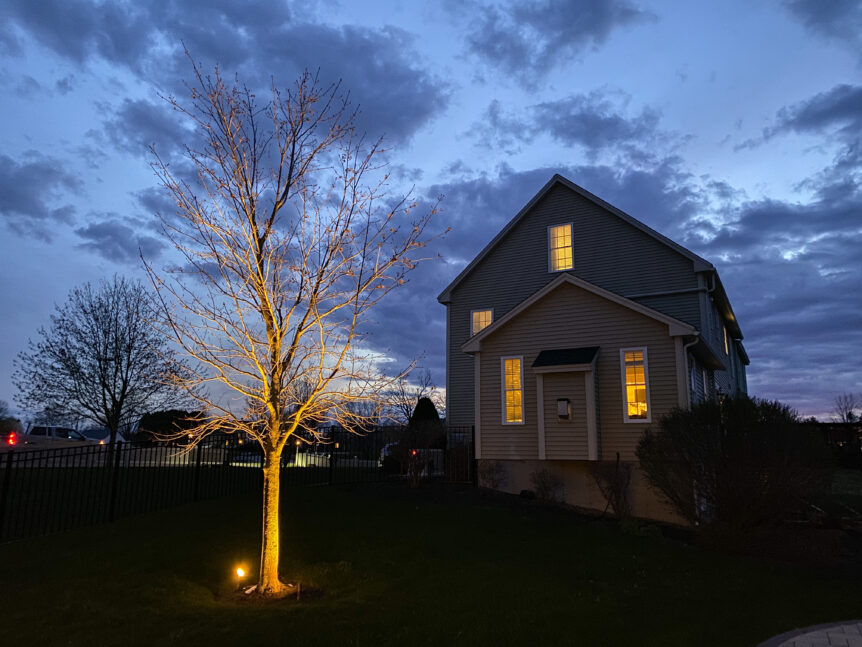FEBRUARY 2024 | Landscape lighting can be a beautiful addition to any property, creating an inviting ambiance and highlighting the unique features of your outdoor space. If you’re considering landscape lighting for your property, it’s important to understand the fundamentals before making a purchase.
1. Types of Landscape Lighting
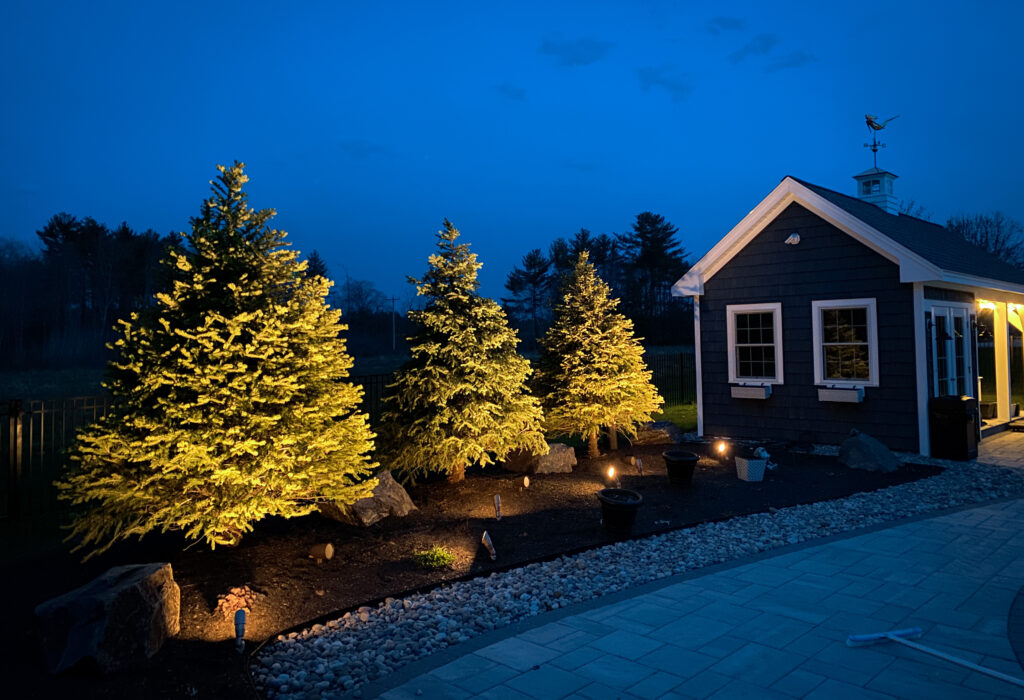
There are several types of landscape lighting to choose from, including:
Path lights: These are small lights placed along walkways, driveways, or garden paths to provide illumination and guide visitors.
Spotlights: These lights are used to highlight trees, statues, or other landscape features. They can also be used to illuminate the facade of your home.
Floodlights: These lights provide broad, even illumination, and are often used to light up large areas of your outdoor space.
Deck and step lights: These lights are installed on decks and steps to provide visibility and prevent accidents.
Underwater lights: These lights are installed in ponds or other water features to create a dramatic effect.
2. Lighting Techniques
When planning your landscape lighting, it’s important to consider the techniques you’ll use to create the desired effect. Some common lighting techniques include:
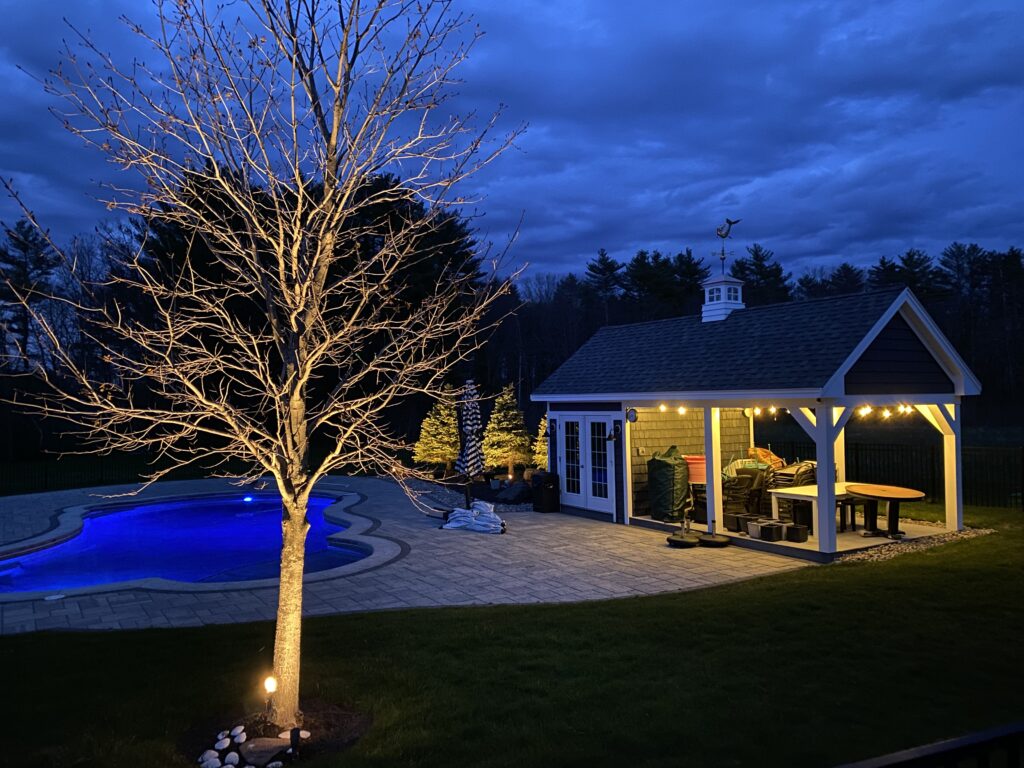
Uplighting: This technique involves placing lights at ground level and directing them upward to highlight the features of your home or landscaping.
Downlighting: This technique involves placing lights in elevated positions and directing them downward to create a softer, more natural effect.
Silhouetting: This technique involves placing lights behind an object to create a dramatic silhouette.
Shadowing: This technique involves placing lights in front of an object to create a shadow effect on a nearby surface.
3. Bulb Types
When choosing the bulbs for your landscape lighting, there are several options to consider. Here are some common bulb types:
LED: LED bulbs are energy-efficient, long-lasting, and produce a bright, white light. They are the most popular option for landscape lighting.
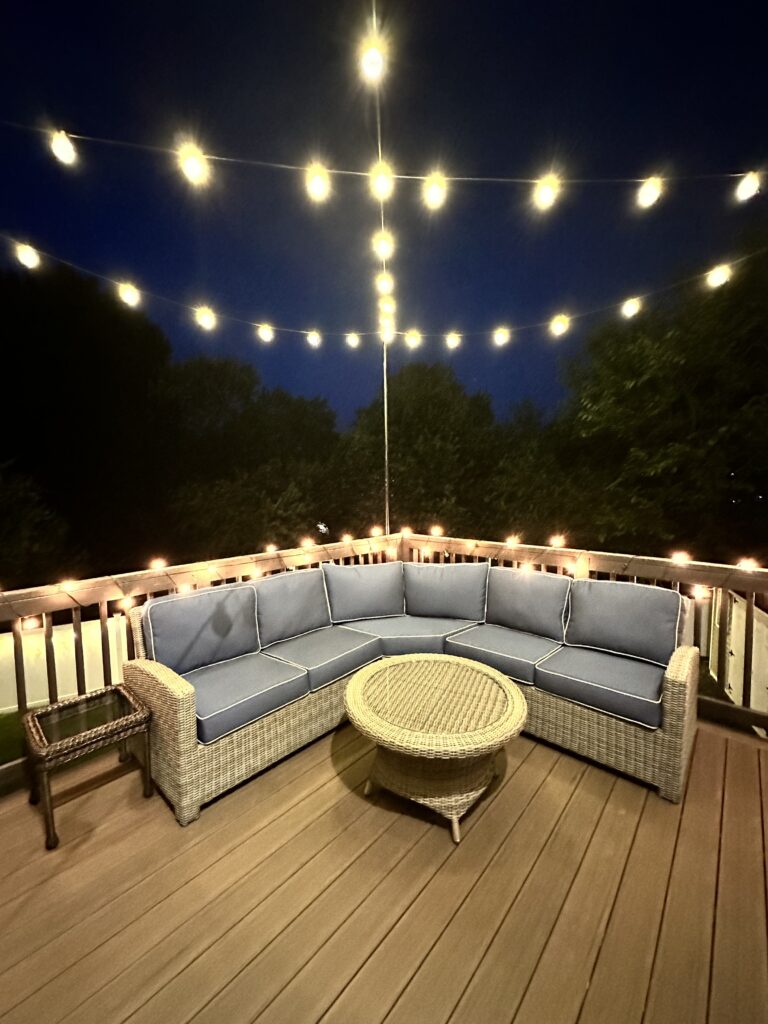
Halogen: Halogen bulbs are less energy-efficient than LED bulbs but produce a warm, inviting light. They are often used in landscape lighting fixtures that require a warmer light.
Incandescent: Incandescent bulbs are the least efficient option but produce a warm, soft light that can be flattering to outdoor features.
4. Power Source
Landscape lighting can be powered by electricity, batteries, or solar power. Each option has its own benefits and drawbacks.
Electric: Electric-powered lights are reliable and provide consistent illumination. However, they require a professional installation and can be costly to run.
Battery: Battery-powered lights are easy to install and don’t require any wiring. However, they need to be replaced periodically and may not provide as much illumination as electric-powered lights.
Solar: Solar-powered lights are the most energy-efficient option and can be installed without any wiring. However, they may not provide consistent illumination and may be less effective in areas with limited sunlight.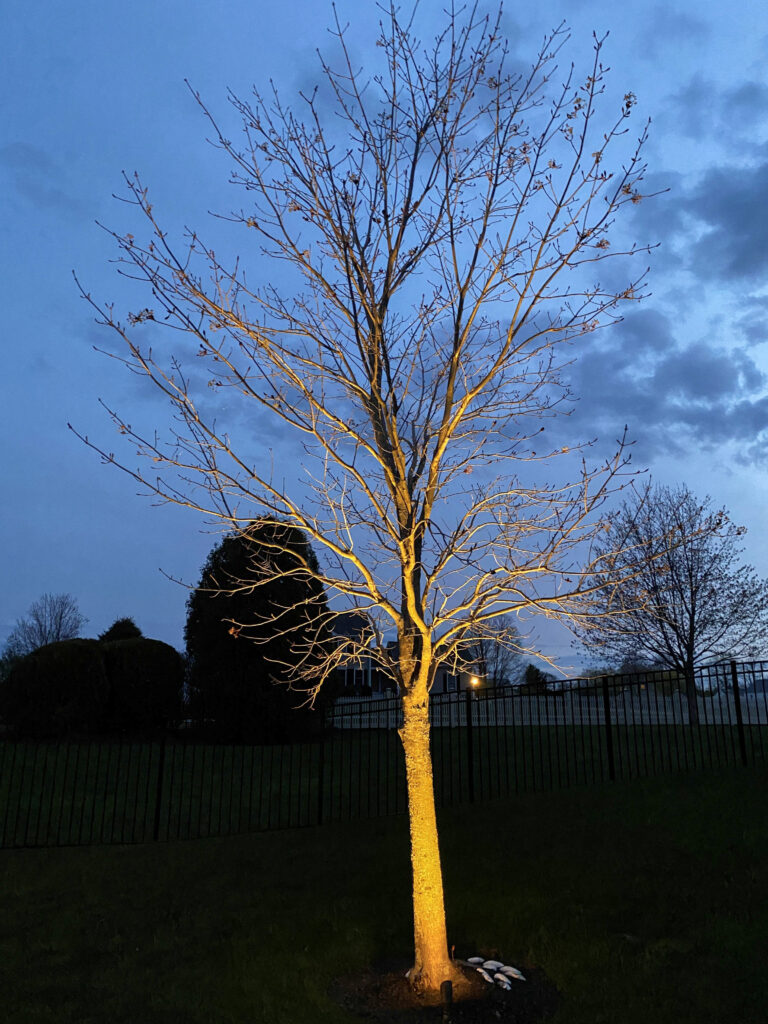
5. Professional Installation
Landscape lighting installation is not a DIY project. It’s important to hire a professional to ensure that the lights are installed safely and correctly. A professional installer can also help you design a lighting plan that meets your needs and budget.
In summary, landscape lighting can add a beautiful and functional element to your outdoor space. When considering landscape lighting for your property, be sure to consider the types of lighting, lighting techniques, bulb types, power sources, and the need for professional installation. With the right planning and installation, landscape lighting can transform your outdoor space into a stunning and inviting oasis.

